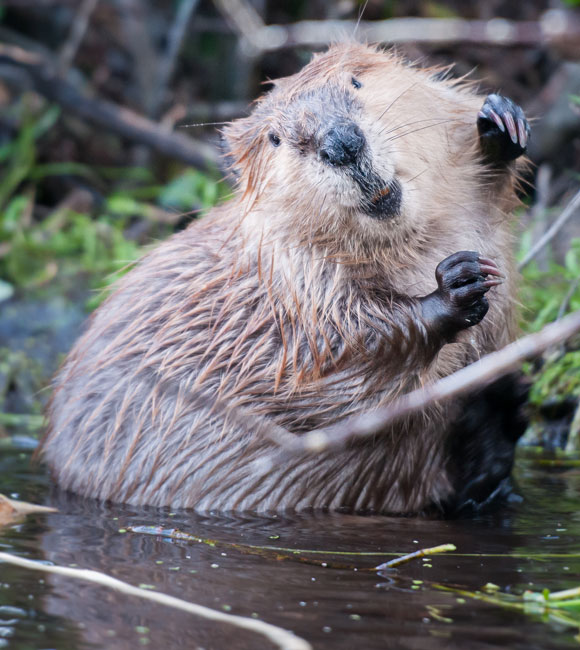Beaver & Muskrat Removal
Beaver & Muskrat Removal for McHenry County Area
Beavers and muskrats generally inhabit places near or in water such as lakes, ponds, and slow-moving streams. Muskrats are highly territorial and can be very aggressive. They can also destroy many types of aquatic vegetation. Beavers can also cause quite a bit of damage to their surrounding environment. Beaver dams can create floodwaters, while they often use their powerful teeth to gnaw on decks, patios, and other wooden structures around homes and businesses. If you could use beaver and muskrat removal services in McHenry, Lake, or Northern Cook County, Illinois Wildlife Services, Inc. wants to be your first call. We’ve specialized in safe, effective, and humane wildlife removal and prevention services since 2000, and we always personalize our services to suit your needs.

Understanding Your Pest: What to Know About Beavers
Among the world’s largest rodents, beavers are characterized by thick fur, webbed feet, flattened, scale-covered tails, and powerful jaws and teeth, which they use to build their homes and dams. The American beaver weighs about 60 pounds and can be anywhere from 23-39 inches in length. However, the beaver’s tail usually adds another 7-12 inches to its overall length. Due to their closable nostrils and ears and transparent eye membranes, beavers have adapted to a semi-aquatic lifestyle. Beavers are primarily nocturnal animals, meaning they become active shortly after sunset until shortly before sunrise and spend their days sleeping. Beavers tend to live in colonies, and they breed from January to March. Their average gestation period is about 105-107 days, giving birth to 1-4 young at a time.
Understanding Your Pest: What to Know About Muskrats
The muskrat is a large, stout, semi-aquatic rodent. Its head is broad and blunt with short ears barely visible beyond the fur. Its coat is practically waterproof and is soft, dense, and grayish brown in color. Its tail is scaled, nearly hairless, and somewhat flattened on the sides. The muskrat is further adapted for its semi-aquatic life with lips that act as valves, closing behind the front incisors so it can gnaw underwater.
They weigh 2-4 pounds and grow to an average length of 18-25 inches long with a tail that’s approximately 8-11 inches long. Muskrats have a high reproductive rate, making them a nuisance pest. They’re polygamous, and breeding takes place from late March through July. With a gestation period of 28-30 days, they can produce up to four litters per year, each with 6-7 young.
Experienced Animal Removal and Prevention Services
If your home or business is located near water and you could benefit from our beaver and muskrat removal services, please don’t hesitate to contact Illinois Wildlife Services, Inc. Certified by the National Wildlife Control Operators Association (NWCOA) of Illinois, we provide our experienced animal removal and prevention services throughout McHenry, Lake, and Northern Cook County. If you have a nuisance wildlife problem, we’d be happy to assist with our safe, eco-friendly products and techniques. We also offer a 30- to 90-day guarantee to ensure your satisfaction.
